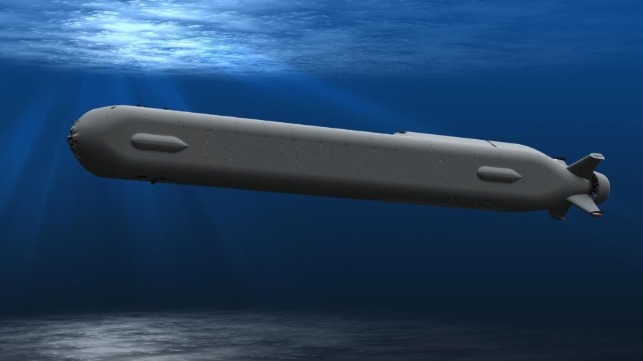As U.S. Navy Plans for Unmanned Ships, Its Biggest Shipbuilder Adapts

As the U.S. Navy gears up for a future with more unmanned vessels and fewer large surface combatants, its supply base is preparing to meet the changing demand. The nation's largest defense shipbuilder, Huntington Ingalls Industries (HII), has announced plans to build a new autonomous vessel research, development and production site in the Hampton Roads area - a significant expansion of its presence near the Navy's largest base complex.
The new 20-acre site will support HII's partnership with Boeing on the XLUUV / Orca autonomous submarine program. XLUUV (short for Extra-Large Unmanned Undersea Vehicle) is an 85-foot submersible designed for missions that are ordinarily carried out by more costly manned submarines - everything from surveillance to anti-surface warfare and land-attack. It has a payload bay with a capacity of eight tons, and its battery-hybrid propulsion system can power it for nearly 6,500 nm at a cruising speed of three knots. It is designed to stay out at sea for months at a time, then return to its home port on its own - all without the support of a manned surface vessel. The five-unit procurement program is worth up to $275 million, including support elements.
XLUUV has been in the works for years, and its arrival coincides with a major shift in defense policy. Last week, Secretary of Defense Mark Esper unveiled a much-anticipated plan for a 500-ship fleet - nearly double the size of the current inventory. Unmanned vessels would make up as much as half of its composition, and subs are the top procurement priority.
HII has extensive experience with underwater unmanned systems, including its Proteus large autonomous sub program. In 2017, it signed on with Boeing as a subcontractor on the XLUUV program, and the new facility in Hampton Roads will support that effort - as well as HII's ongoing evolution in the unmanned systems space. It has the capacity to support the production of the first five vessels in the series, with room to grow as needed.
The site was selected to expand on HII's existing footprint in the Hampton Roads area and to facilitate cooperation with several important neighbors. Naval Station Norfolk, the largest naval base complex in the world, is just across Chesapeake Bay. The facility will be just across the street from the NASA Langley Research Center and eight miles away from HII Newport News Shipbuilding.
"I think this area is going to continue to grow, and all the areas where we have manufacturing are going to benefit," says Andy Green, President Technical Solutions and EVP at Huntington Ingalls Industries. "The recent comments by the Secretary of Defense are consistent with the work we've been doing and with the increased demand for autonomous vehicles from the fleet."
HII is the world's largest defense shipbuilder, and Green says that it makes sense to respond to the growing demand for autonomous capabilities now. "What we're doing here is a natural extension of what we've been doing in naval shipbuilding for decades," he says. And as HII is also a competitor in the race to build the Navy's future Large Unmanned Surface Vessel (LUSV), its investment in unmanned and autonomous technology could soon translate into steel-hulled shipbuilding orders as well. "LUSV takes our shipbuilding DNA and combines it with our autonomy and systems integration capabilities, and that works well for us," says Green. "We sized our new center to meet current demand, but we have designed it so that we can expand quickly as the surface and subsurface unmanned market grows."
